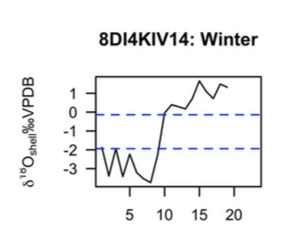 A new article by researchers at the University of Georgia and the Florida Museum shows how isotope geochemistry can be used to determine when mollusks such as oysters were harvested and used for mound construction. The authors, Isabelle Lulewicz, Neill Wallis, and Victor Thompson, found that the oxygen isotope values for oyster shell in construction fill of Garden Patch Mound II were consistent with cooler weather. These findings, coupled with other evidence, suggest that people came together seasonally at Garden Patch for ritual activities that included mound building.
A new article by researchers at the University of Georgia and the Florida Museum shows how isotope geochemistry can be used to determine when mollusks such as oysters were harvested and used for mound construction. The authors, Isabelle Lulewicz, Neill Wallis, and Victor Thompson, found that the oxygen isotope values for oyster shell in construction fill of Garden Patch Mound II were consistent with cooler weather. These findings, coupled with other evidence, suggest that people came together seasonally at Garden Patch for ritual activities that included mound building.
Lulewicz, Isabelle H., Neill J. Wallis, and Victor D. Thompson
2019 Exploring the the season of mound building through oxygen isotope geochemistry at the Garden Patch site, Gulf Coast Florida, USA. Southeastern Archaeology. DOI: 10.1080/0734578X.2019.1679571